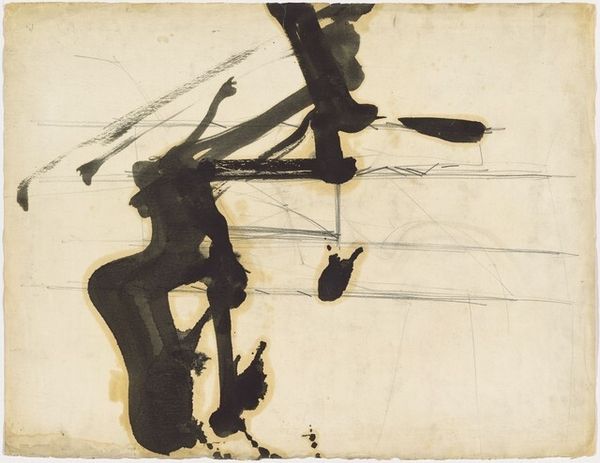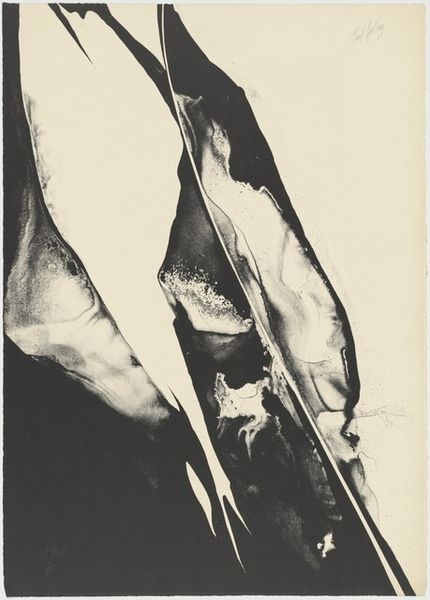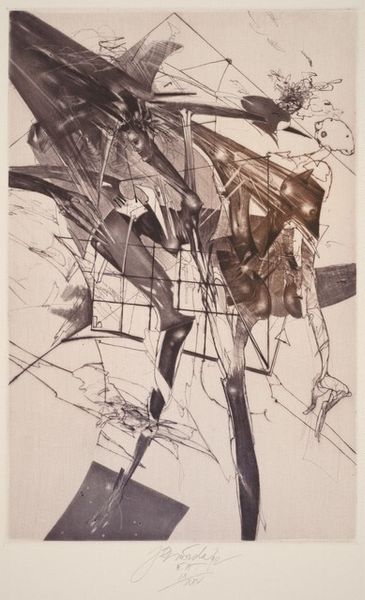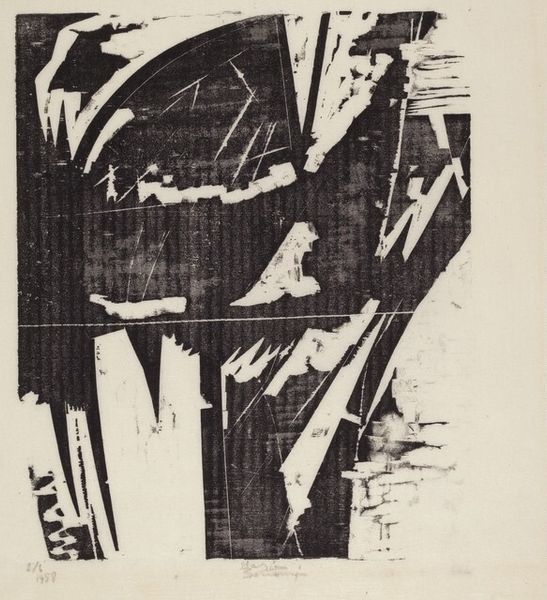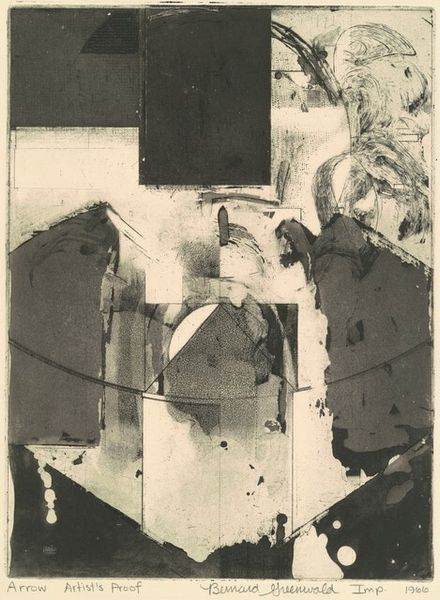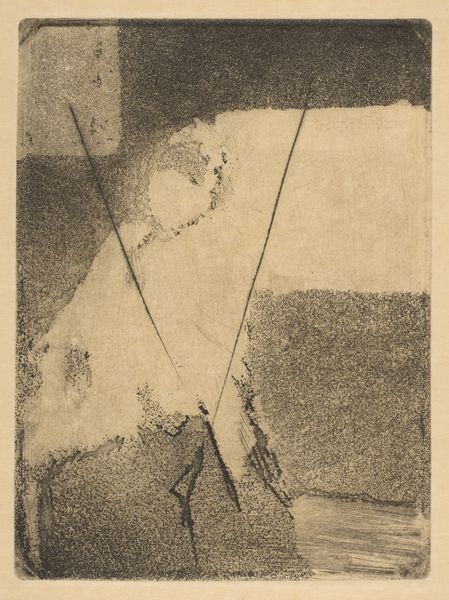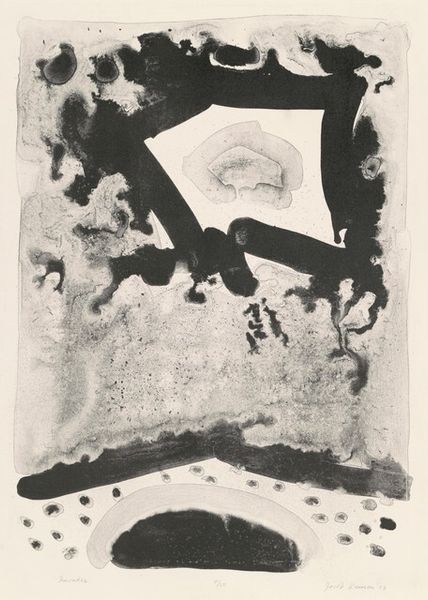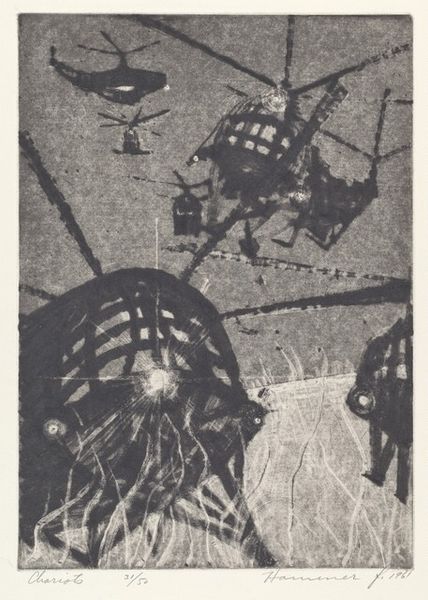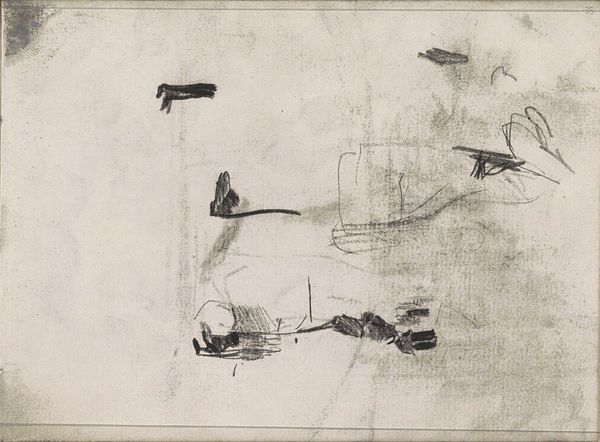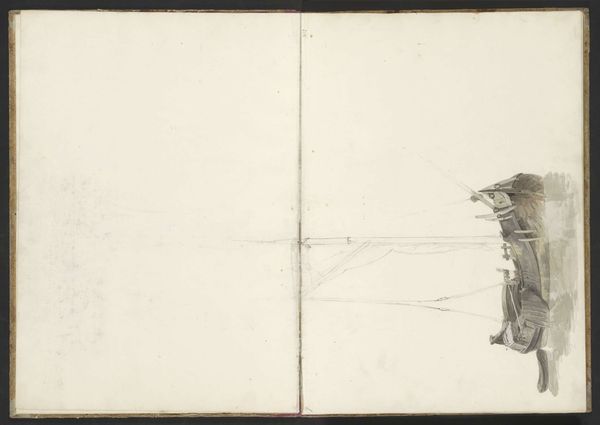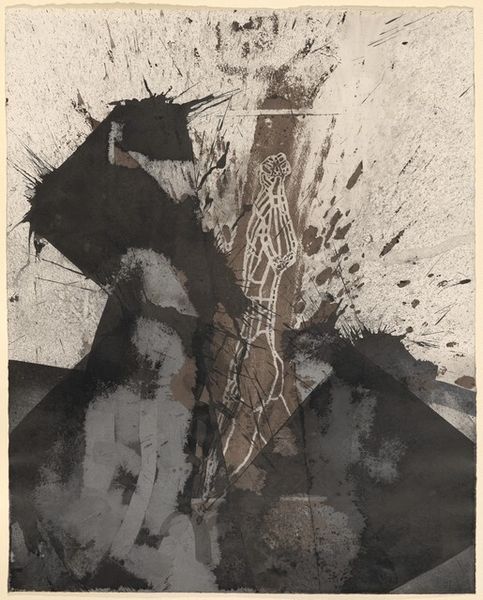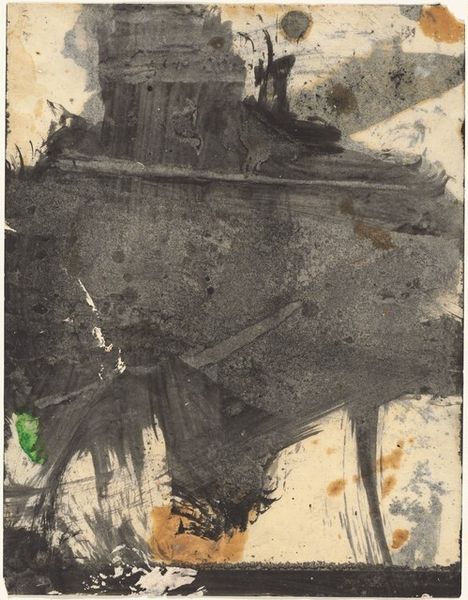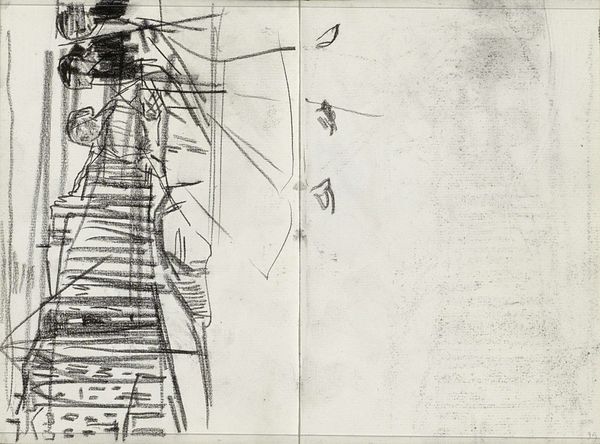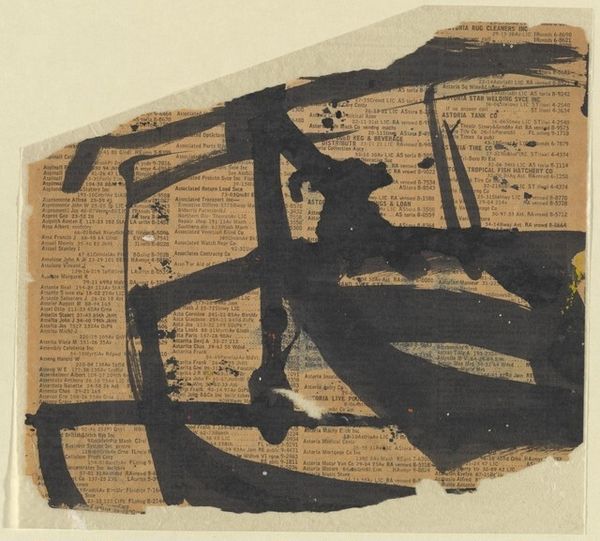
drawing, paper, ink
#
abstract-expressionism
#
drawing
#
paper
#
form
#
ink
#
line
#
monochrome
Dimensions: sheet: 48.1 × 40.8 cm (18 15/16 × 16 1/16 in.)
Copyright: National Gallery of Art: CC0 1.0
Editor: Here we have Franz Kline's ink on paper work, "Study for Betsy." It looks very spontaneous, almost like the lines are fighting for space on the page. What stands out to you when you look at it? Curator: Well, let’s consider the material reality of ink and paper. Kline's aggressive application of ink, the drips, the blotches... It suggests a deliberate engagement with the inherent qualities of the materials. The paper isn't just a passive surface, is it? It’s actively absorbing the ink, resisting it, perhaps even warping under its weight. What effect do you think that creates for the viewer? Editor: I see what you mean. The absorbency of the paper contributes to the textures. Also, the brown tone of the paper peaks through in different densities to change the dark monochrome color. I am assuming the choice of ink on paper makes it reproducible in theory, so is that an aspect too? Curator: Exactly. Think about the economics of artistic production at the time. Ink and paper are relatively inexpensive, readily available materials. The "study" aspect also suggests process. Kline isn’t interested in hiding the labor of creating the piece, quite the contrary! The gesture, the mark, are all indexical of his presence. It's a defiance of formal constraints. Now, how might we understand this challenge to traditional methods within the socio-political context of the mid-20th century? Editor: I hadn't considered that aspect. It seems like a deconstruction of high art and access. I am realizing now that it wasn’t just spontaneously made; the composition takes on different forms when I think of Kline’s control over material application and social influence of reproducibility. Curator: Yes! By understanding the materiality of "Study for Betsy," we can think of how its processes, and Kline's actions as a worker himself, challenges a viewer to really confront our assumptions around art and accessibility.
Comments
No comments
Be the first to comment and join the conversation on the ultimate creative platform.
